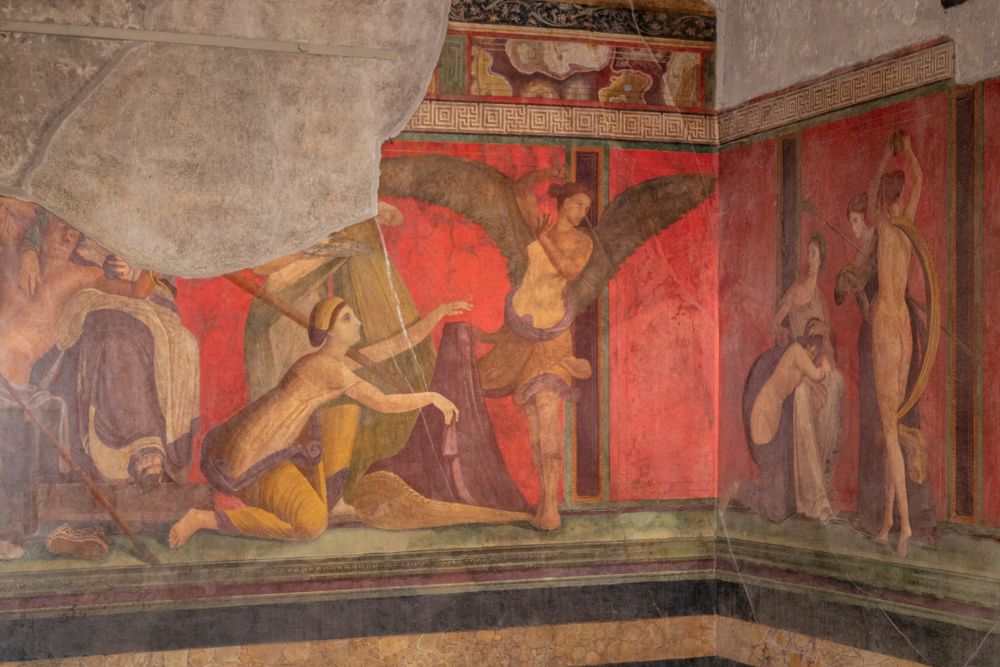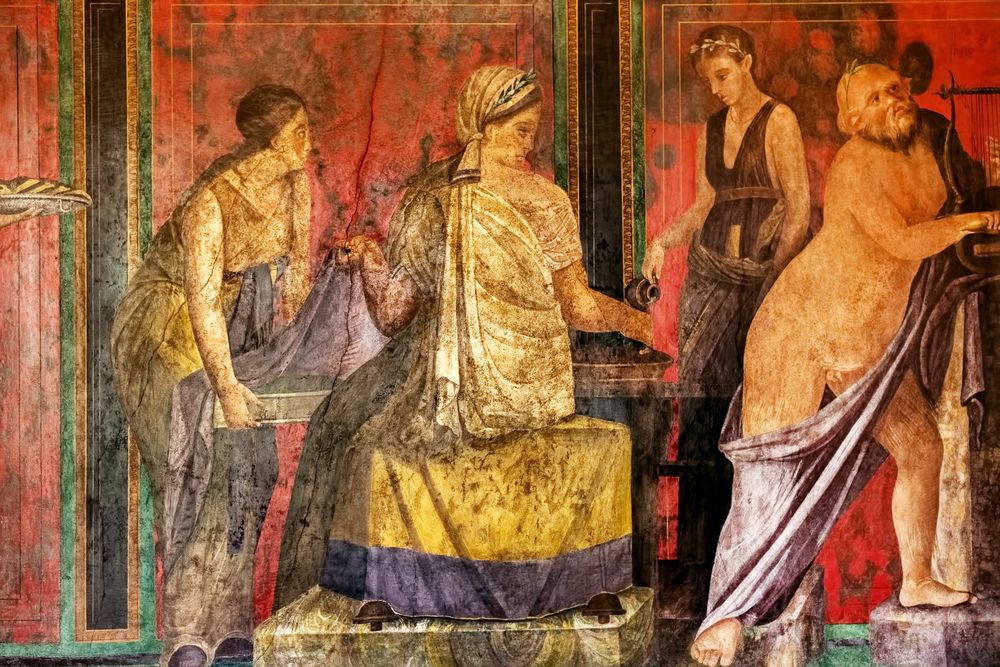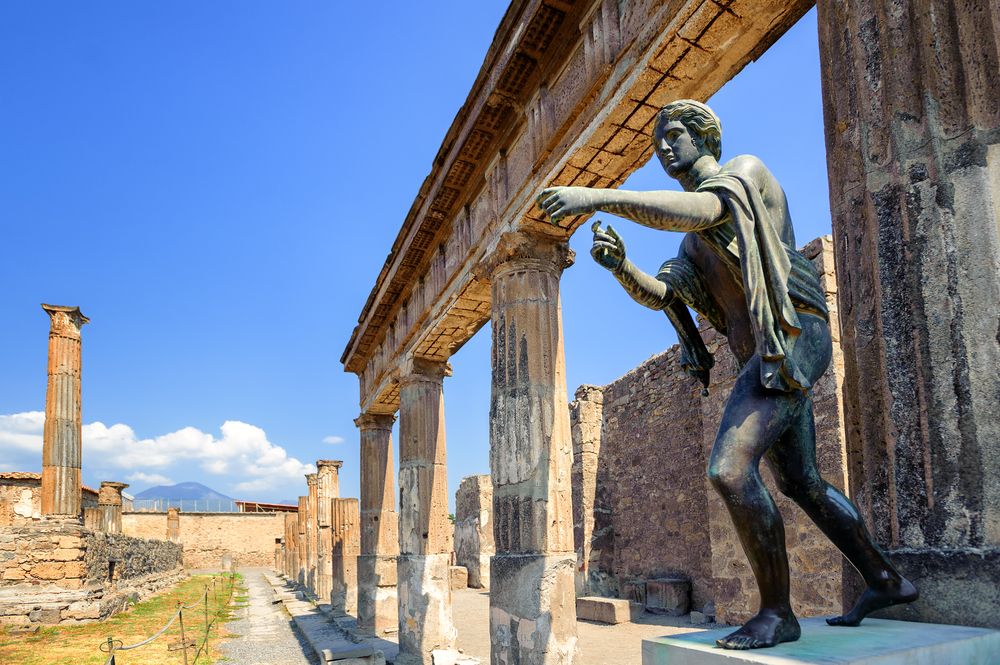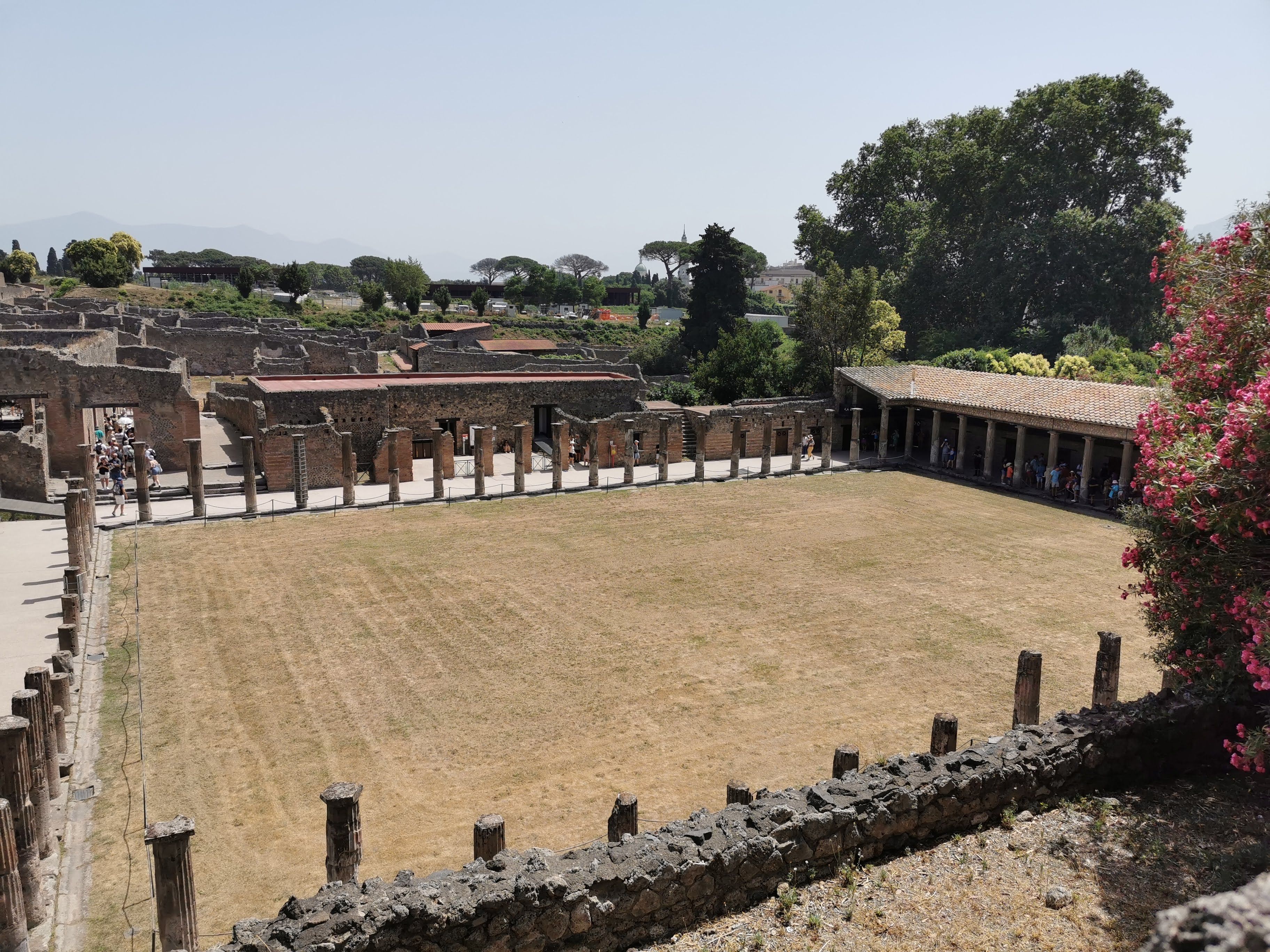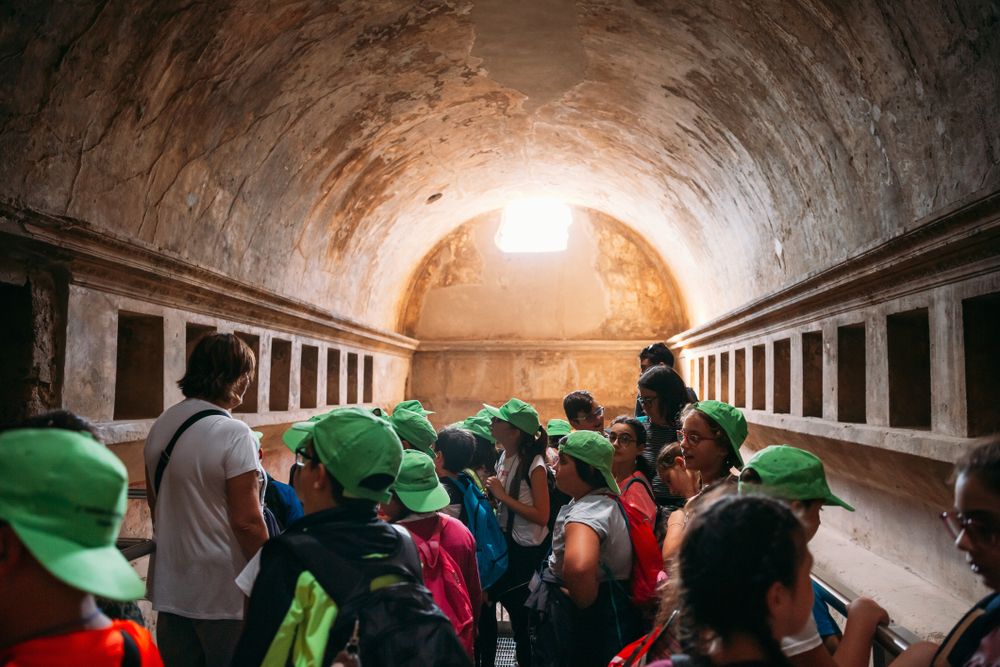Read update
- The Villa Of The Mysteries In Once-Pompeii Holds Many Mysteries
Summary
- The Villa of the Mysteries in Pompeii dates back to the 2nd century BC, with its current form dating to 80-70 BC. It is known for its well-preserved ancient Roman frescoes, particularly in Room 5.
- The Villa of the Mysteries is home to paintings that depict the initiation of a bride into a Greco-Roman mystery cult dedicated to Dionysus, the god of wine. Room 5 is particularly famous for this depiction.
- Pompeii and the Villa of the Mysteries offer insight into the destruction and preservation caused by the eruption of Mount Vesuvius. The villa also hints at the belief that the eruption was a sign to repent and improve the culture and behavior of the Roman people.
Pompeii is one of the most famous archeological Roman sites, and an almost unique opportunity to discover life in the early Roman Empire preserved in incredible detail. Pompeii was buried by Mount Vesuvius in AD 79, entombing the Roman city in a thick blanket of volcanic ash. Visiting Pompeii and learning what happened to its people really is a must for anyone interested in discovering ancient Rome. Pompeii is located just outside Naples, one of Italy's most picturesque cities.
There are plenty of excellent Roman buildings to explore in Pompeii, including plenty of well-preserved Roman villas. One of the best villas is the Villa of the Mysteries. The Villa of the Mysteries is particularly famous for its large, continuous fresco covering three walls. They are regarded as some of the very best surviving ancient Roman art. Here's what to know about the Villa of the Mysteries, one of the best-preserved Roman villas.
UPDATE: 2023/12/07 19:32 EST BY NOAH STAATS
The Villa Of The Mysteries In Once-Pompeii Holds Many Mysteries
This article has been refreshed with further details surrounding the end of Pompeii and what the Villa of the Mysteries may have to share about the culture, influence, and mistakes of the Roman Empire many centuries ago. There's something to see and learn here, so it's certainly a stop worth making while in the area.
The History Of The Villa Of The Mysteries In Pompeii
Villa of the Mysteries dates back to the 2nd century BC
The Villa of the Mysteries dates back to the 2nd century BC but changed over the years to get its current form in 80-70 BC. The friezes of the mysteries date from this time. The exquisite frescos, such as those found in Room 5, make this ancient Roman suburban villa so noteworthy.
- Built: 2nd Century BC
The villa is large (although not nearly as large as Emperor Hadrian's villa just outside of Rome). It is known that the villa produced its own wine as a wine press was found there (that was common for the time).
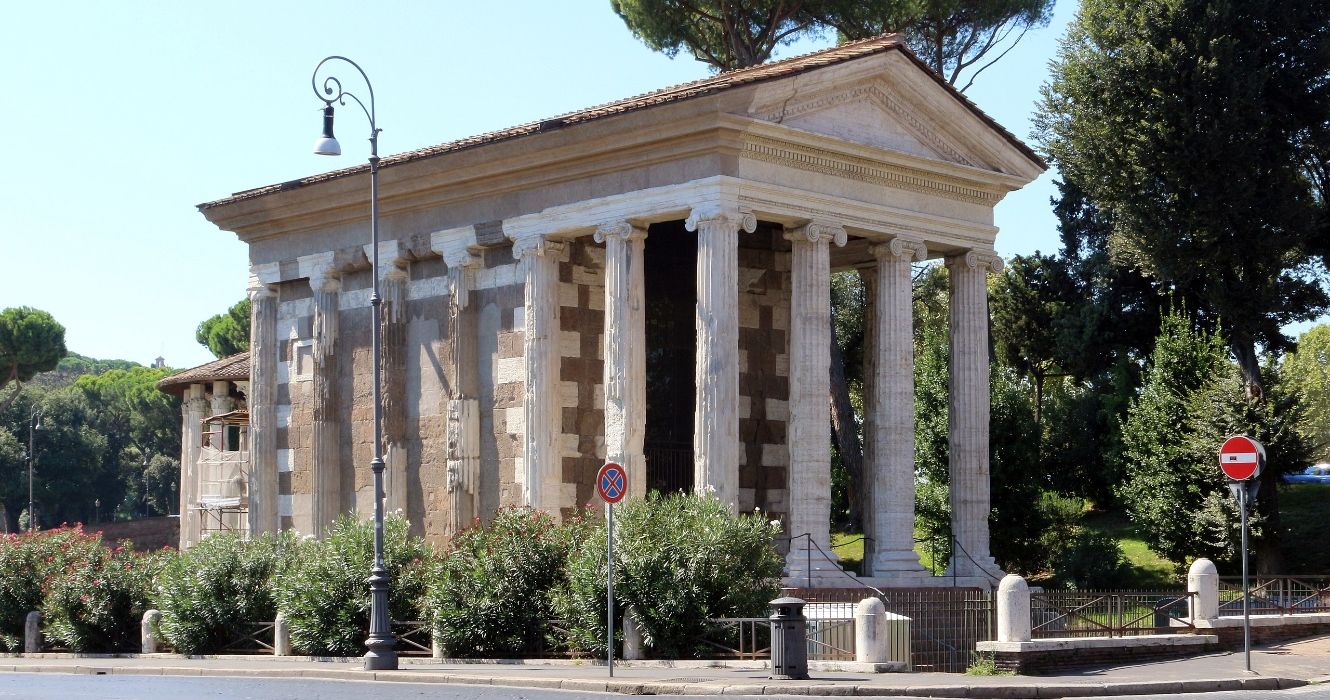
Here's What To Know About This Historic Ancient Roman Temple In Rome
The Temple of Portunus is a marvelous historical snapshot encapsulating the architectural and religious mixtures that make up Rome.The cataclysmic event of the eruption of Vesuvius did not destroy the building but preserved and froze it in time. Even the roofs and ceilings of the building were preserved. The Villa of the Mysteries was excavated in 1909 when the rest of Pompeii was excavated.
Villa Of The Mysteries Paintings: Room 5's Depiction Of The Greco-Roman Mystery Cult
A near-perfectly preserved painting glimmers at the Villa of the Mysteries in Pompeii
The Villa of the Mysteries has one of the best-preserved ancient paintings, especially in Room 5. The frescos are believed to show the initiation of a bride into a Greco-Roman mystery cult. It depicts a mysterious rite linked with Dionysus (Greek name; called Bacchus by the Romans) and his wife, Ariadne.
Dionysian is shown dancing and drinking wine. It seems the cult was dedicated to Dionysus, the god of wine, fertility, and religious ecstasy. Specific rites were required to become a member of the Dionysian Mystery cult.
The walls of the Villa of the Mysteries are adorned with female figures as well as maenads (the female followers of Dionysus), winged figures, and fauns performing ritual activities.
It is possible the frescos depict a bride being initiated into the Bacchic Mysteries as part of the preparation for marriage. The exact usage of Room 5 is still not certain, but it has been suggested that it was only used on special occasions for invited guests.
- The Villa of the Mysteries has one of the best-preserved ancient paintings.
- Room five in the villa is where guests can find the iconic initiation of a bride into a Greco-Roman mystery cult.
Petrified Bodies & What Else To Know About Pompeii's Villa Of The Mysteries
The iconically haunting bodies that remained post-eruption are a staple of the Villa of the Mysteries
Pompeii is famous for its many petrified bodies that succumbed to the volcanic ash (casts with incredible detail can be found at the museum). As to be expected, petrified bodies were also found at the villa. Nine bodies — including of women and children — were found in the villa. Plaster casts of some of them were made. Visiting the archeological museum at Pompeii is another must-see attraction at the site.
The villa had large rooms and hanging gardens. As with much of Pompeii, it was damaged in the earthquake of 62 AD. After that, it was largely used to produce and sell wine.
The Villa of the Mysteries in Pompeii is found around 400 meters (yards) outside the town walls (not nearly as impressive as the ancient walls of Rome still standing today).
- Many of the bodies that succumbed to volcanic ash can be found here.
- Nine bodies, including women and children, were found at Pompeii's Villa of Mysteries.
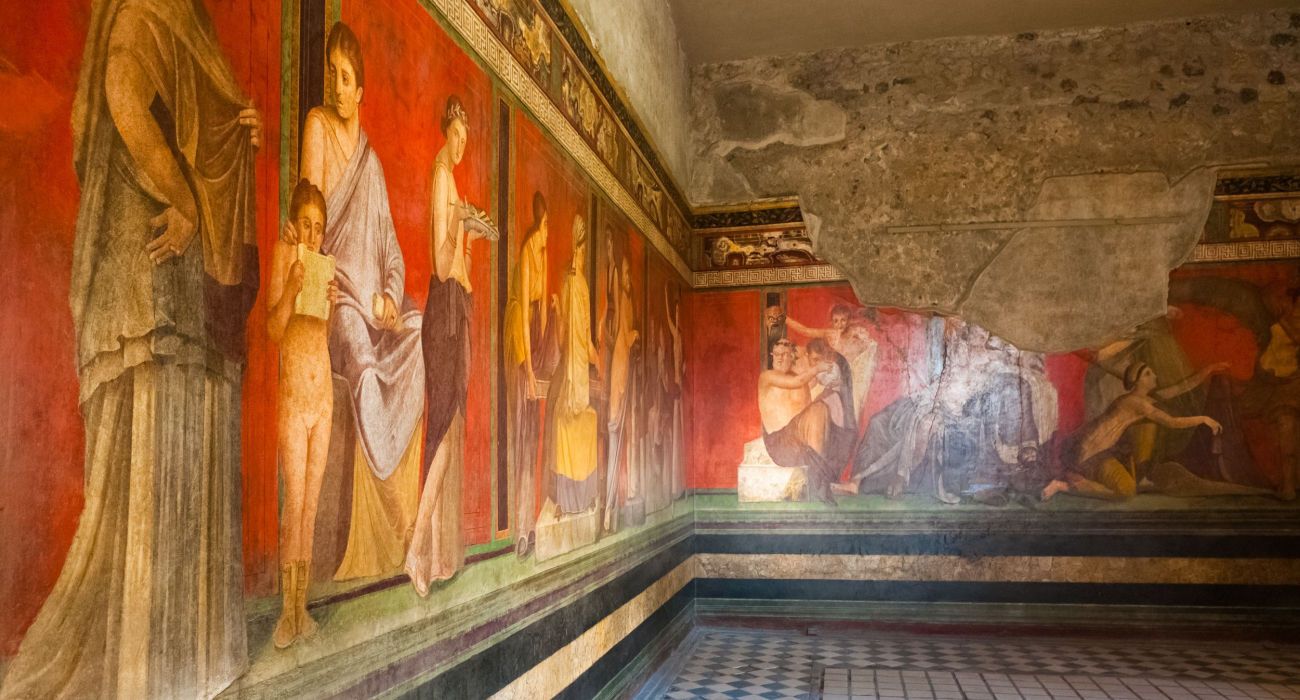
"Beware Of The Dog" & Other Remarkable Frescos & Paintings To See While In Pompeii
Pompeii is an ancient Roman art gallery for those interested in discovering Roman frescos, paintings, and mosaics.Visiting The Villa Of The Mysteries In Pompeii
There are endless questions to be asked at the Villa of the Mysteries in Pompeii
The Villa of the Mysteries is part of the main archeological site of Pompeii. Remember that Pompeii is a very large site with much to see and explore, probably too much for one day. It is a great idea to take a guided tour of Pompeii to get the most out of the experience and to discover many of the city's hidden secrets and gems.
There are many more frescos and ancient Roman art around the city, including erotic art from brothels and extensive ancient Roman graffiti.
The Villa of the Mysteries is located beyond the Herculaneum Gate and Walls and is the last attraction at the archeological site on the ancient road leading out of the city.
Pompeii Archeological Site:
- Opening Hours: 9:00 am to 7:00 pm (last admission 5:30 pm)
- Admission Fee: 18 Euros ($20)
Pompeii is worth visiting today, being one of the top historical attractions in the world. Learn more and book the tickets and the guided tour on the official Pompeii website.
- The Villa of the Mysteries is located beyond the Herculaneum Gate and Walls.
- This villa is part of the main archeological site of Pompeii.
The Villa Of The Mysteries In Pompeii May Have Hinted At The City's Demise
Was the eruption of Mount Vesuvius a sign?
One of the more damning aspects coming out of the Villa of the Mysteries in Pompeii is the belief that the city of Pompeii was shrouded in corruption, sin, and scandal. Due to this, it's long been rumored the volcanic eruption came about as a sign to repent and improve the culture and behavior of the Roman people at that time.
After all, Rome fell rather fast and hard, leading many historians and those in religious organizations to claim Pompeii was a warning.
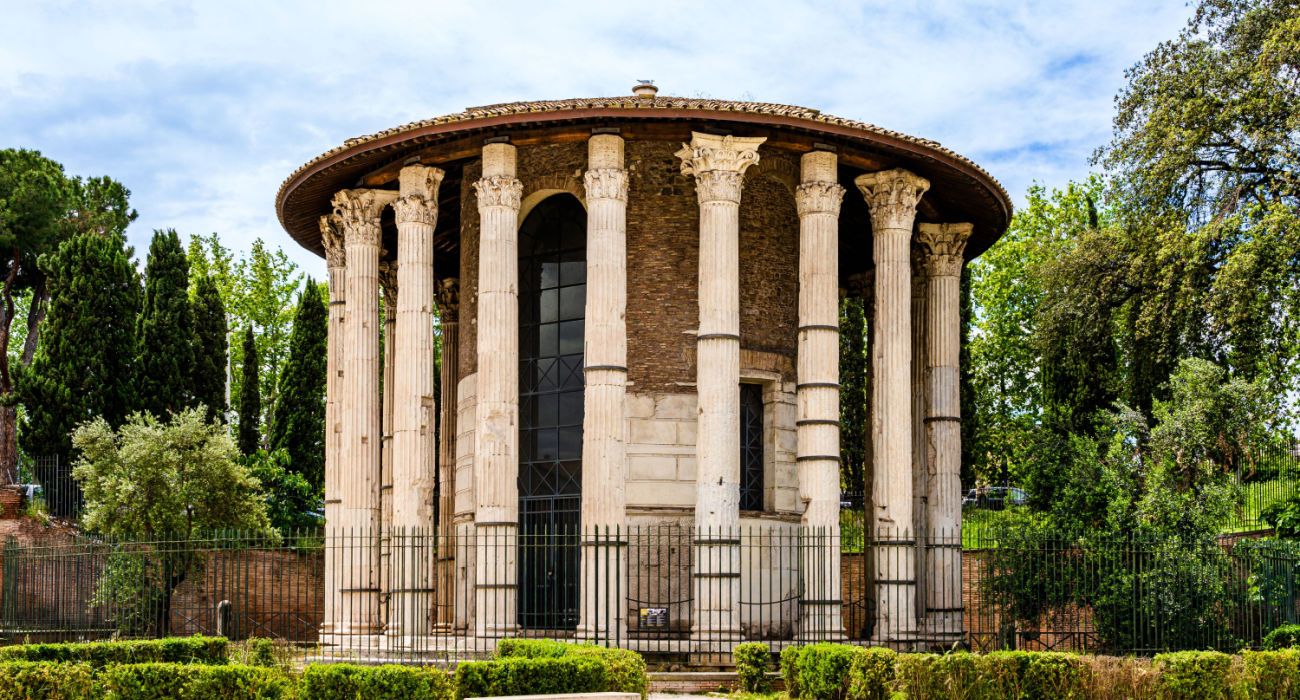
Hercules Victor: See The Oldest Standing Building In Rome (& Here's How To Visit)
The Temple of Hercules Victor may be a humble-looking temple, but it is one of the oldest buildings to survive the test of time in Rome.There have even been modern tourist encounters with cursed objects and bad things happening after taking them home, so the land where this now-ruined city sits remains rather active.
The Villa of the Mysteries has always been filled with subliminal cult-related art and relics, which ties into the idea that because of bad behavior, Mount Vesuvius erupting may have been a sign from a higher power.
We've seen floods, fires, eruptions, and natural disasters wipe out entire countries, which always seems to tie back to one group or the other, claiming it was a "sign." For Pompeii's sake, it's one we'll keep note of.

